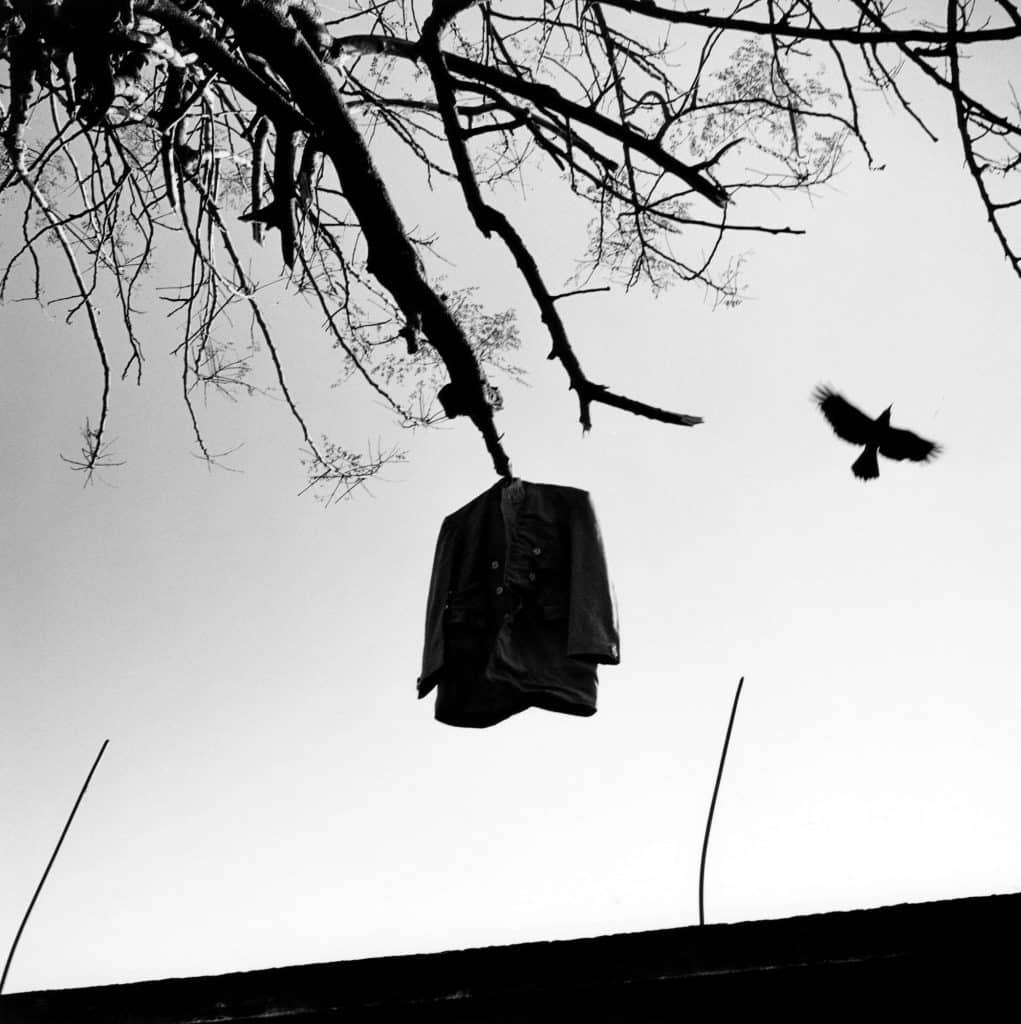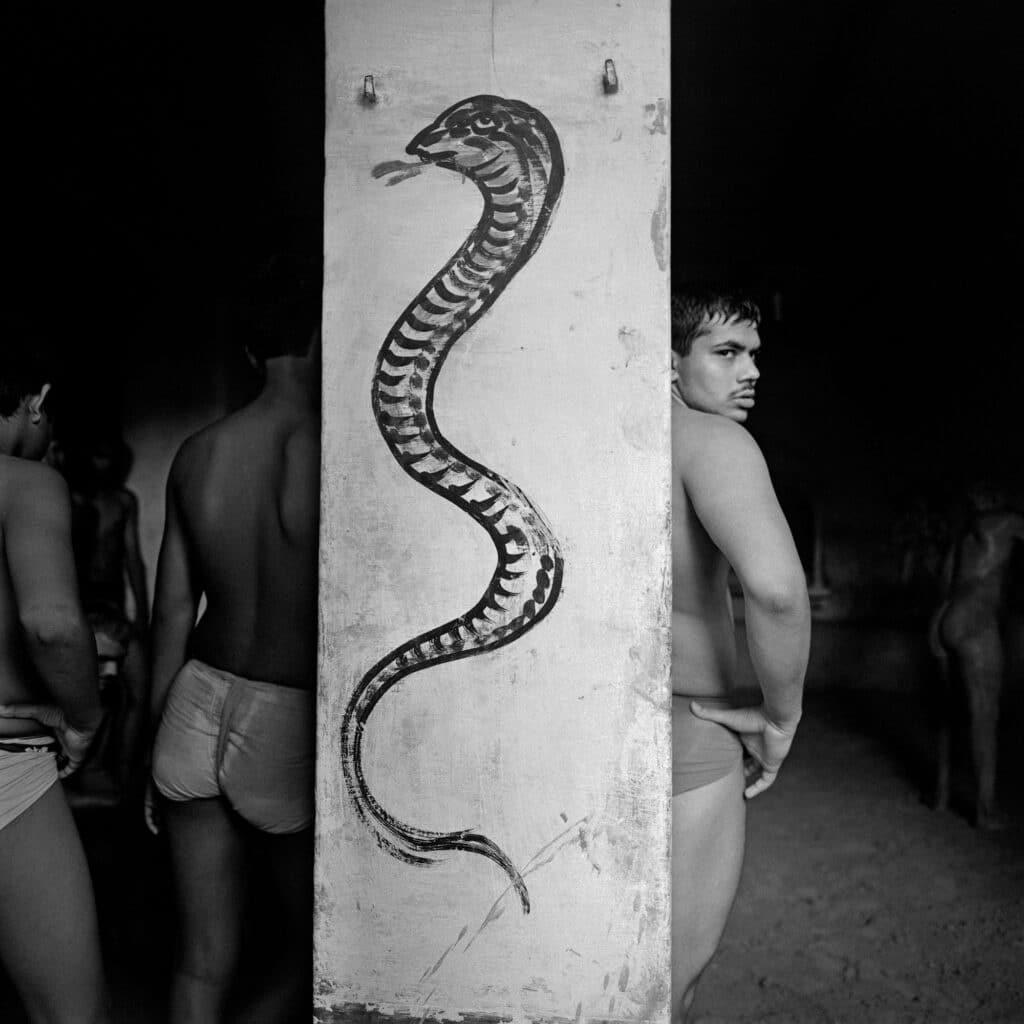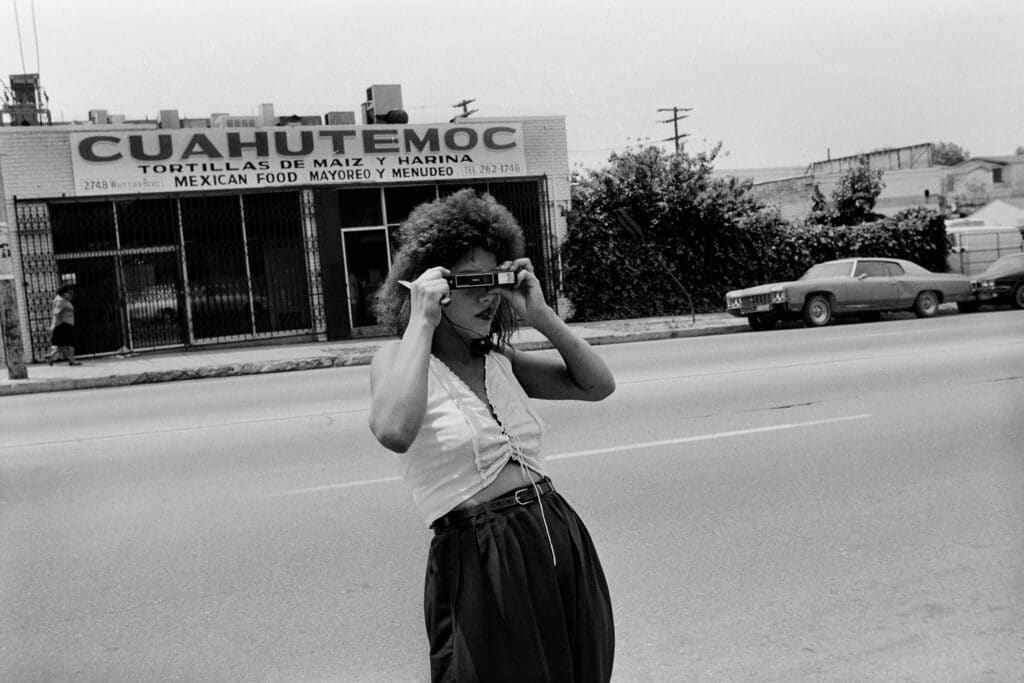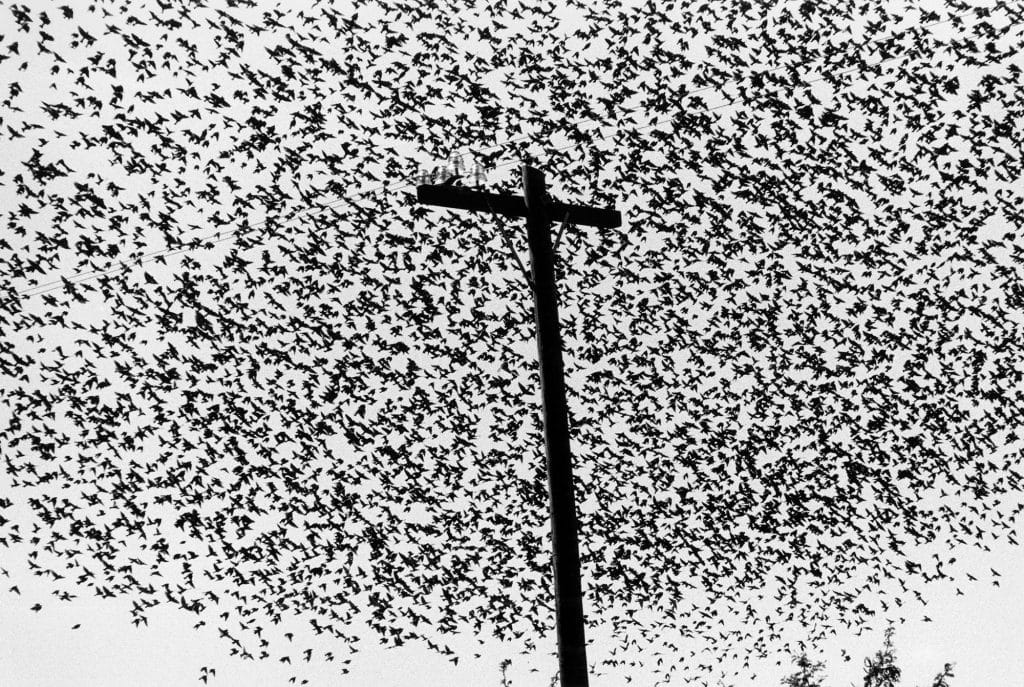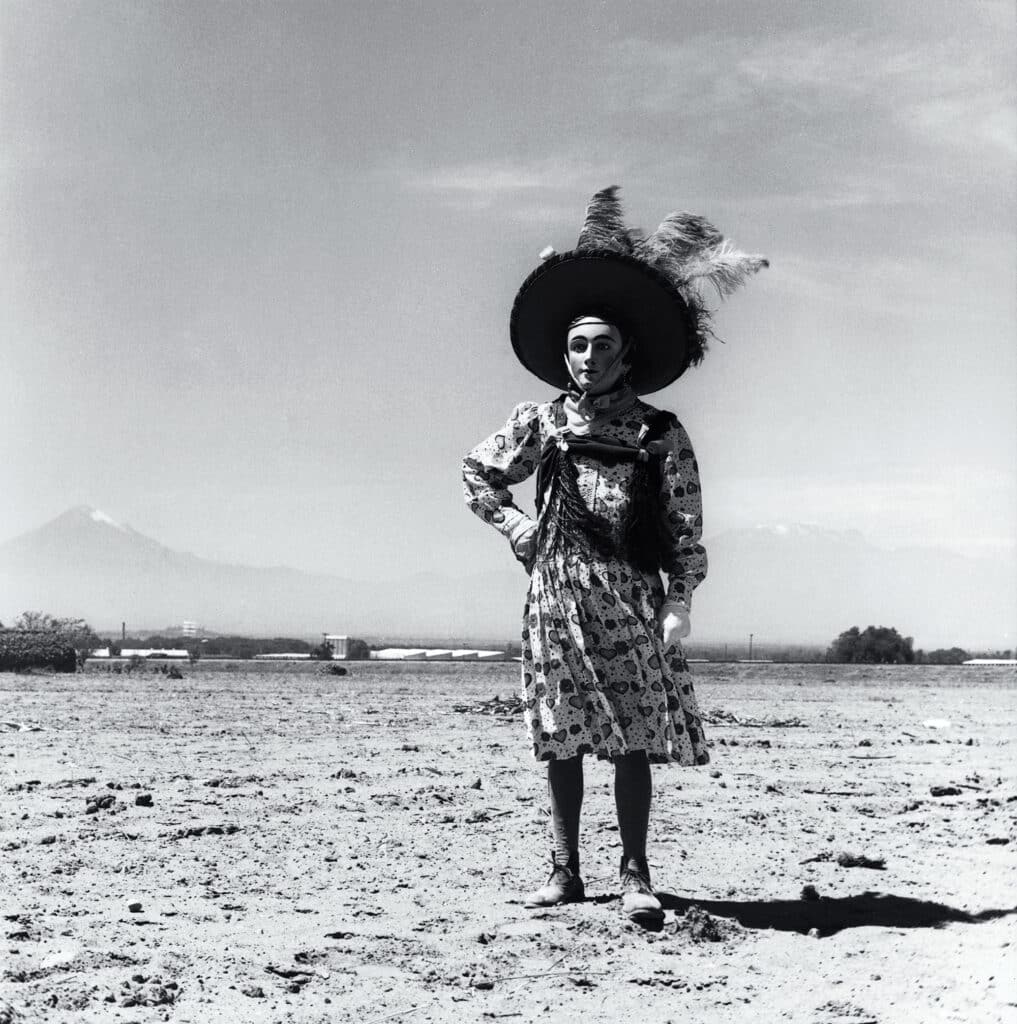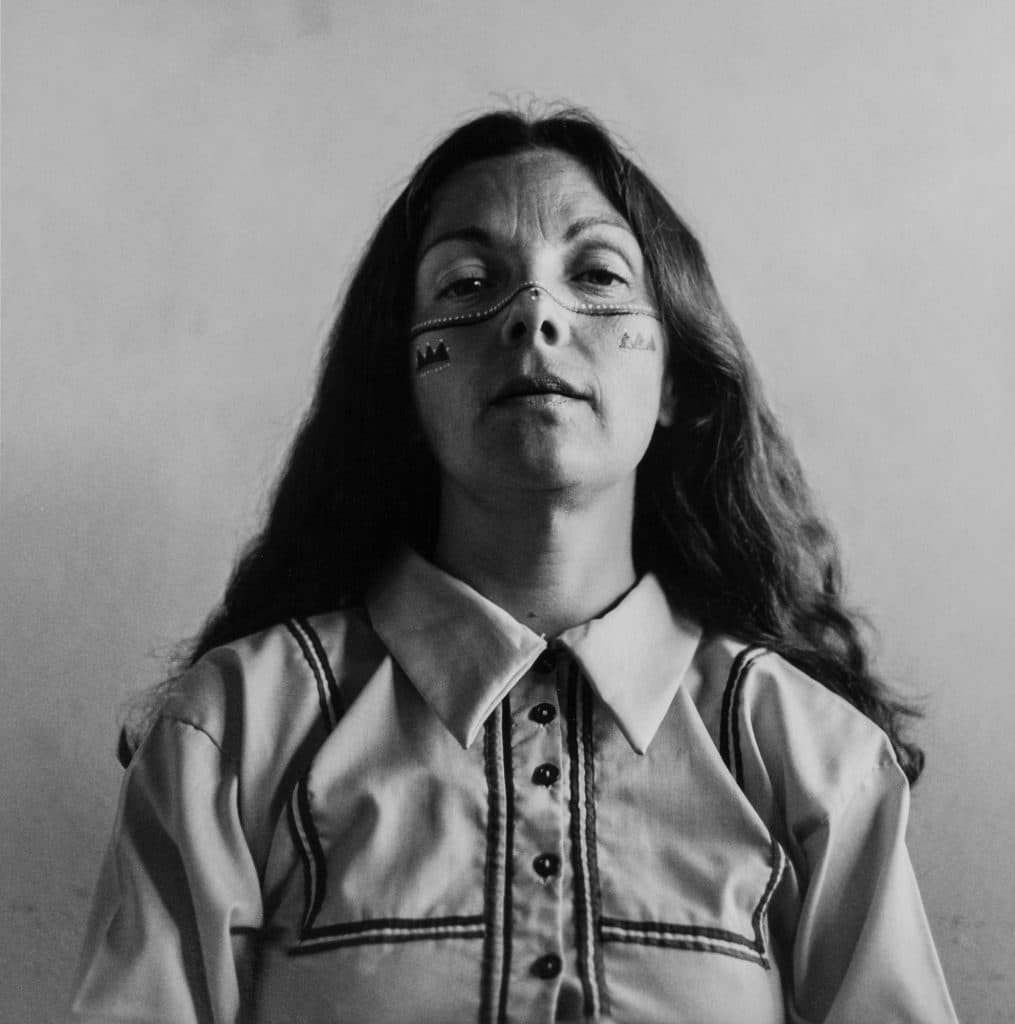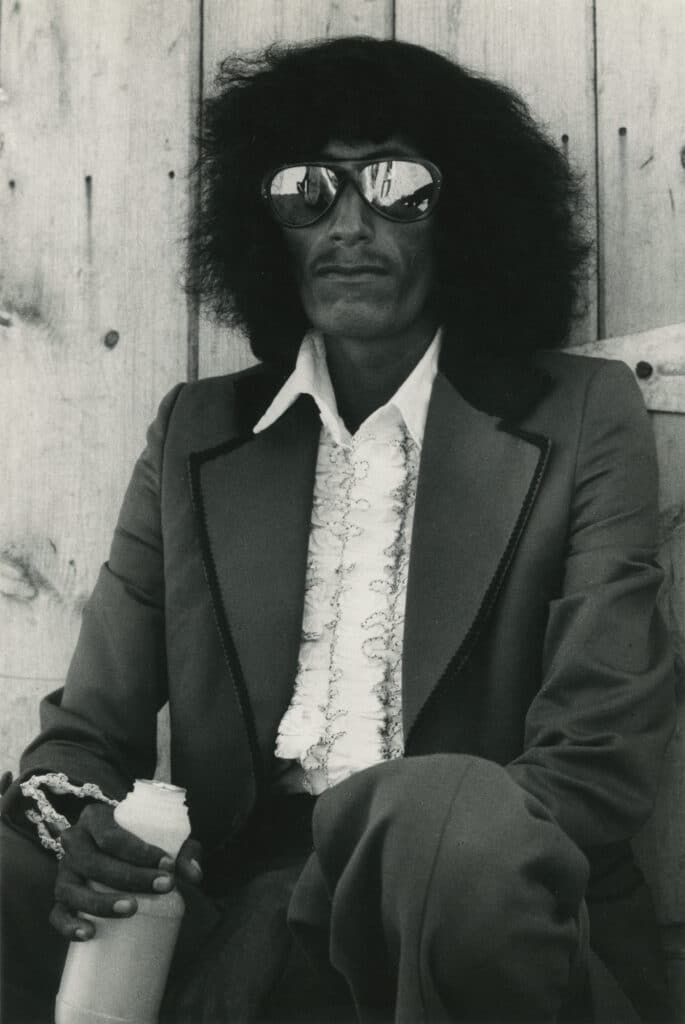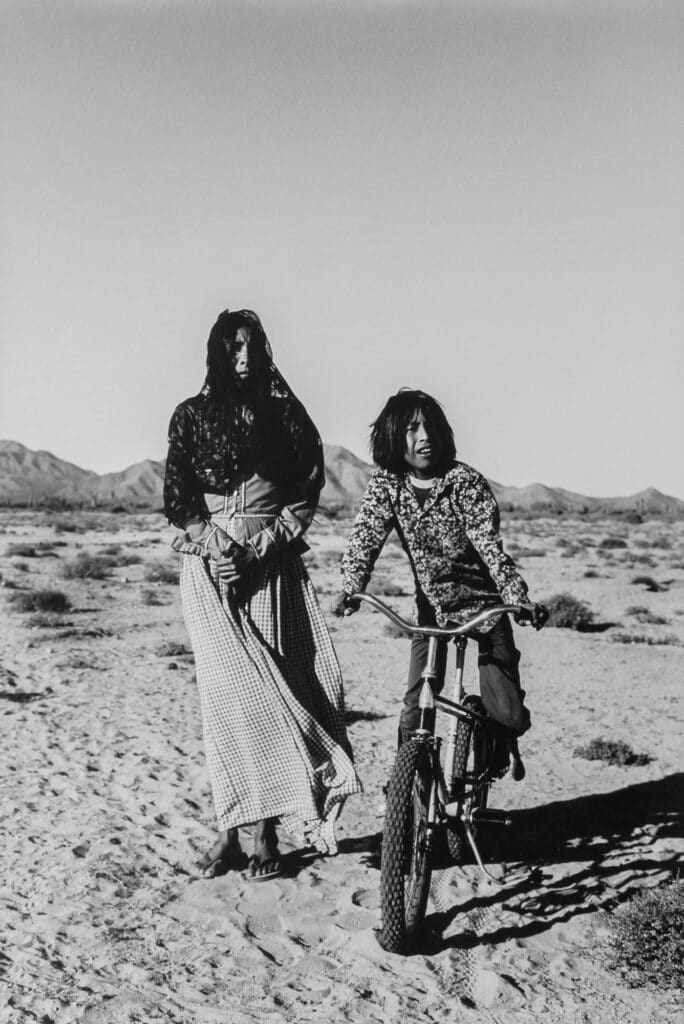Graciela Iturbide cannot represent her native country, Mexico, all on her own, let alone twentieth-century Mexican photography, notably embodied by Manuel Álvarez Bravo (1902–2002). She was once his assistant, and never fails to mention this master of time, possessed of immense literary and visual culture, and capable of describing from memory, with equal ease, the melancholic Paris of Eugène Atget and an engraving by José Guadalupe Posada. It was he who taught her patience and instilled in her curiosity about Mexico—a working-class, hybrid country to the core. The history of that land is populated by more or less saturnine revolutionaries, such as Emiliano Zapata, whose name resonates across continents and on the silver screen; and artists like Tina Modotti, a former Hollywood starlet and a legendary muse, who won the heart, among others, of American Edward Weston, even while producing her own body of sensual work.
Nobody’s follower, Graciela Iturbide forged a photographic territory of her own. Mexico, of course, resonates in her work, as it did in Manuel Álvarez Bravo’s, especially in her formative years, but she has continued to expand her horizons to other tropics, as shown in the exhibition dedicated to her at the Fondation Cartier pour l’art contemporain in Paris. Its title, Heliotropo 37, is the address of Graciela Iturbide’s studio, in Mexico City, where she was born on May 16, 1942.
The artist welcomes us with a smile, as if indifferent to time zones, still astonished to arouse so much enthusiasm. Because, yes, we are enthusiastic. Her exhibition does not just glorify the past; it offers an expansive vision of her oeuvre, from her early 1960s’ images to the latest color photographs taken in 2021 in the alabaster quarries of Tecali. While it may lack some of the bohemian whimsy dear to fans of Coyoacán, Frida Khalo, and her friend Aurora Reyes, the exhibition holds its own: it is true to Graciela Iturbide’s open mind and her commitment to those she photographs—never on the sly.
Being on a first-name basis is a must. We have known each other for a long time, ever since her series on Juchitán, in the Isthmus of Tehuantepec, was exhibited at the Cultural Center of Mexico in Paris, in the fall of 1988. Juchitán, the birthplace of the painter Francisco Toledo, which he revealed to Graciela Iturbide in 1979, is a “magical city” where Eisenstein shot parts of Que Viva Mexico.
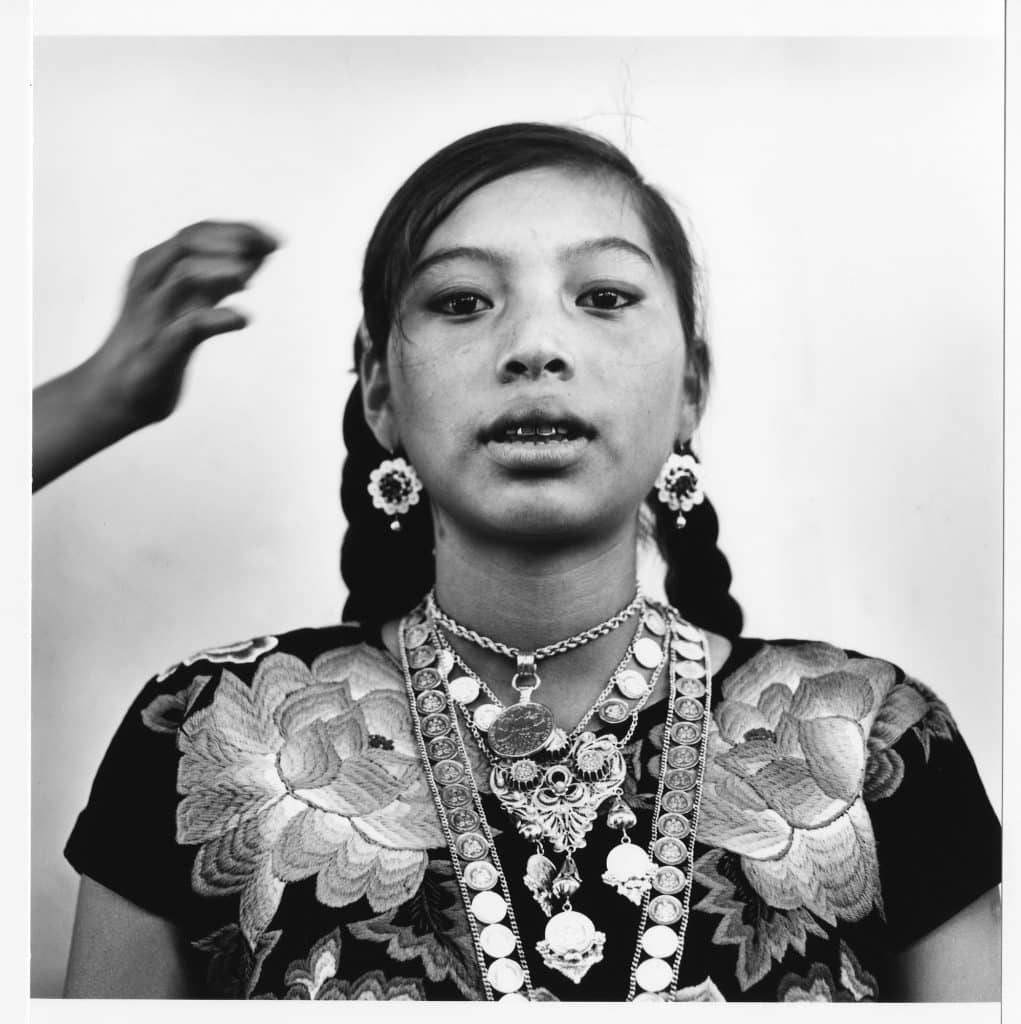
A few months ago, during lockdown, in late April 2021, we met over Zoom as she was revisiting her archives, poring over her “obsessions of the moment, her rocks, gardens, and landscapes. I photograph everything that surprises me. If nothing surprises me, I photograph nothing. It’s still a surprise when I go back to my negatives. To work in one’s own archives is to accept one’s work as is or as it had been. There are good things, and others not so good, but it is not a burden. Everything intensifies, what you like and what you hate. It intensifies the meaning of your work, its imprint, it consolidates it. Photography is a living matter. As I go about listening, looking, reading, traveling, my images are the sum of all my knowledge and thoughts. And, in fact, it is my soul that is inscribed in images…”
The conversation continues, no cigarette break, no need to get distracted.
Do you ever go back to the sites of your photo stories? For example, the Seri people, in the Sonoran Desert, whom you met in 1978?
I went back there two years ago, and it was very interesting. This community lives in the desert by the Sea of Cortez: the Seri Indians have the right granted to them by the president to fish and gather whatever they want. It is an ultra-protected area.
The women weave baskets and make small objects, while the men fish. They also make wooden figurines, very solid, very stylish, it’s a unique art, doesn’t look like anything typically Mexican, more like Nordic influence, but nobody knows why.
They are very poor. Except for a few Americans who come to buy the handicrafts, nothing happens in this desert, the economy is at a standstill. Juchitán, by contrast, is a wealthy region, the women work, there are markets, trade, tourism.
Since Juchitán, your work has evolved…
Juchitán will never leave me, I’ve spent a lot of time there. But now it’s enough, I feel fulfilled! Especially since I have revealed my Juchitán, it is my vision, my interpretation.
Your photography has become contemplative, very much focused on nature: no more humans, no more traces, no more myths. What remains is the plant world…
I photograph what I am. A month ago, I was in the Canary Islands where I understood, not the origin of the world, but its evolution. Perhaps I’m going backwards. First, I was interested in the human race, then in volcanoes — I listened to their noise — in the lava, in cacti… And, curiously, after those days on Lanzarote, I met up with some friends in Barcelona who took me to see an exhibition which had Darwin, the big bang, it was great.
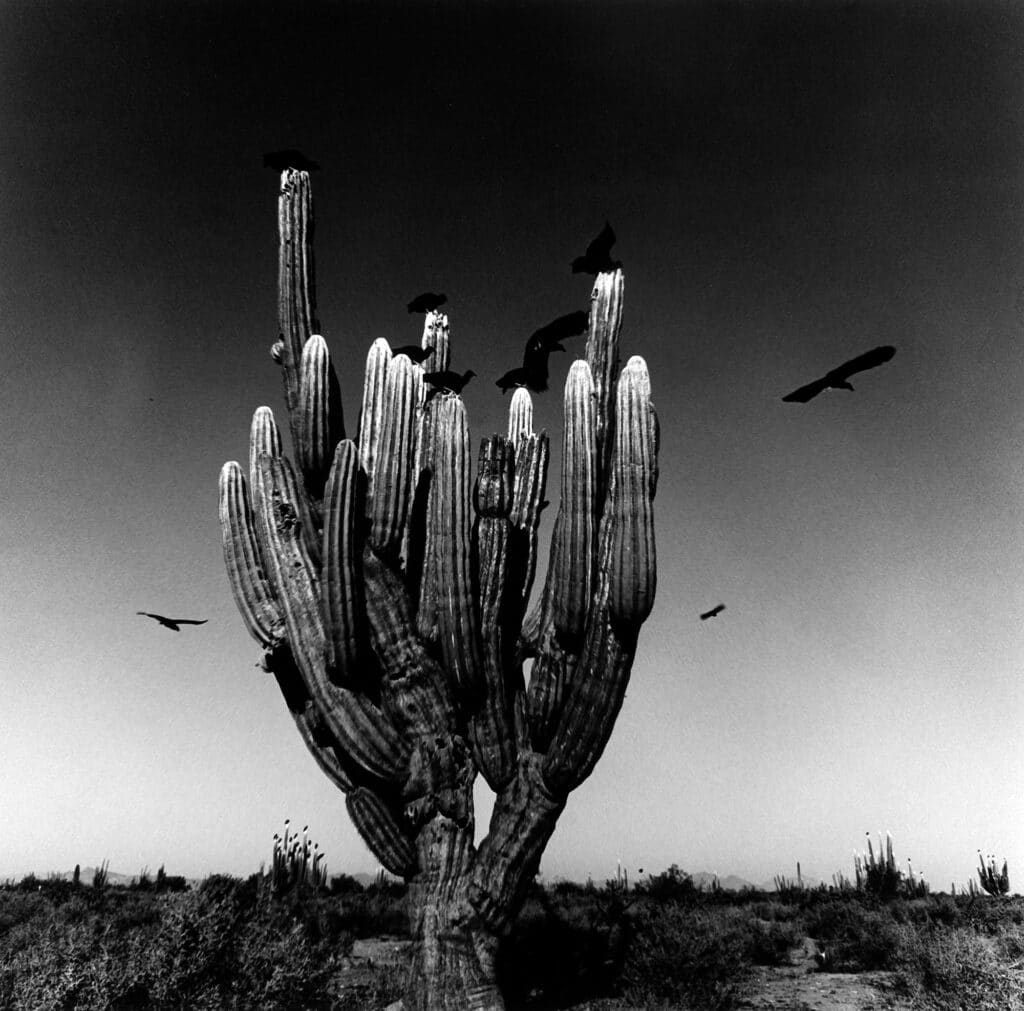
The two rooms on the ground floor of the Fondation Cartier embody, for us, your present. Do you agree?
Photography is an extension of oneself, and I recognize myself in all my photographs, those from Juchitán as well as those taken in India, Italy, Mozambique, or in the botanical garden of Oaxaca. Those memories are always there, present. On the ground floor, you have modern prints, while the basement is filled with vintage prints, but, for me, it’s all the same, it’s only the marketplace that assigns them different values.
I have always loved the dark room and have always developed my own images. Over the last three years, I have had an assistant to take care of it because I’ve been traveling more.
What has changed the most in printing?
The paper. The paper I used when I started doesn’t exist anymore. That’s too bad, it had warmer tones. When Josef Koudelka and I got an Agfa Award, we asked them why. They said the paper sometimes left greasy spots. My modern prints are better than my old prints, which are sometimes better, precisely on this Agfa paper! The paper and the chemicals have completely changed, everything has changed…
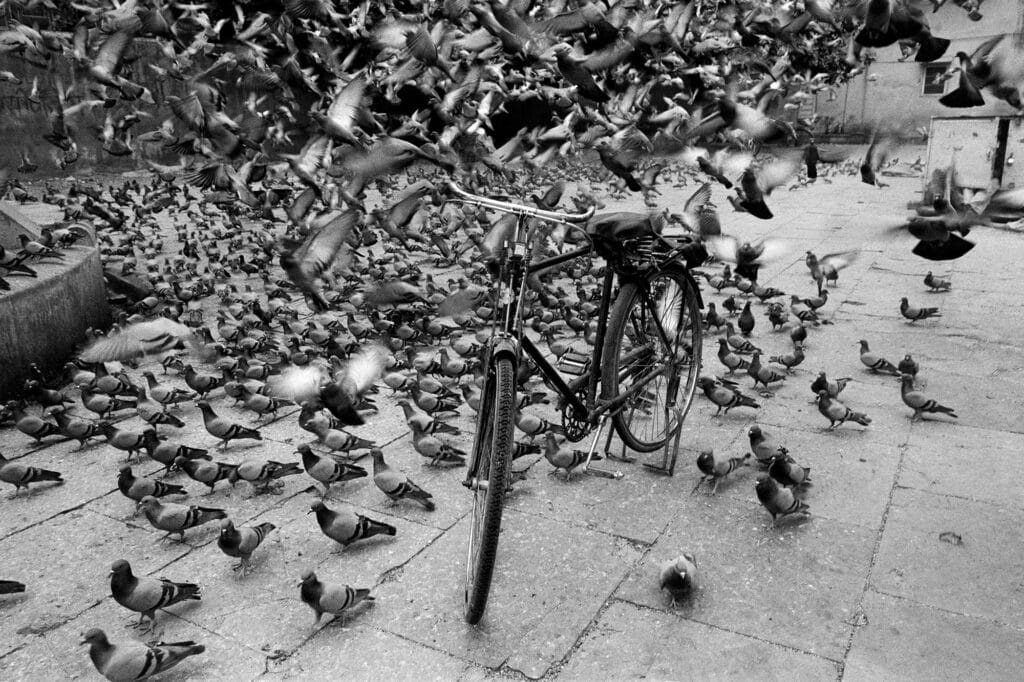
In your color series made in Tecali, a village near Puebla, rocks are center stage…
Yes, it’s true, rocks are very important. In many cultures, humans cut rocks; in some countries, like Japan, stones are sacred; in Machu Picchu, rocks have not budged in thousands of years. There is also cave art; I would love to visit Lascaux and Altamira. Stone plays an essential part in our lives, it is what we are.
There is an enigmatic photograph in your exhibition, which inspired a short story by the Guatemalan writer Eduardo Halfon. It’s someone in water, right? But what is he doing?
It is a very strange photo, it’s true, especially since it is deprived of context. In the town of Espinazo in Northern Mexico, they have this tradition of the child Fidencio, El Niño Fidencio. He was a healer, adult but small in stature, hence his nickname.
Espinazo is a rather isolated place, despite its proximity to Monterrey; to get there you must travel by plane, train, bus, and by car… Every year, the anniversary of the birth of Niño Fidencio is celebrated, and many pilgrims come to be cured, even one of our presidents went there.
I took the picture before arriving there. There is a small pool of water, very clean, in which people purify themselves and then put on white garments. I dropped my cameras several times, took a lot of pictures, but this is the only one I developed, how to say it, there was very potent energy, I was not at ease. Mary Ellen Mark and Cristina Garcia Rodero also came to this strange place.
This photo seems like pulled from a dream… Do you still write down your dreams?
I don’t know where I put my dream journal, but I can tell you a premonitory dream. In this dream, a man, sowing, says aloud, “In my land, I am going to sow birds…” When I photographed the man with the birds, the photo that hangs in the exhibition, I recognized him immediately, it was the man from my dream.
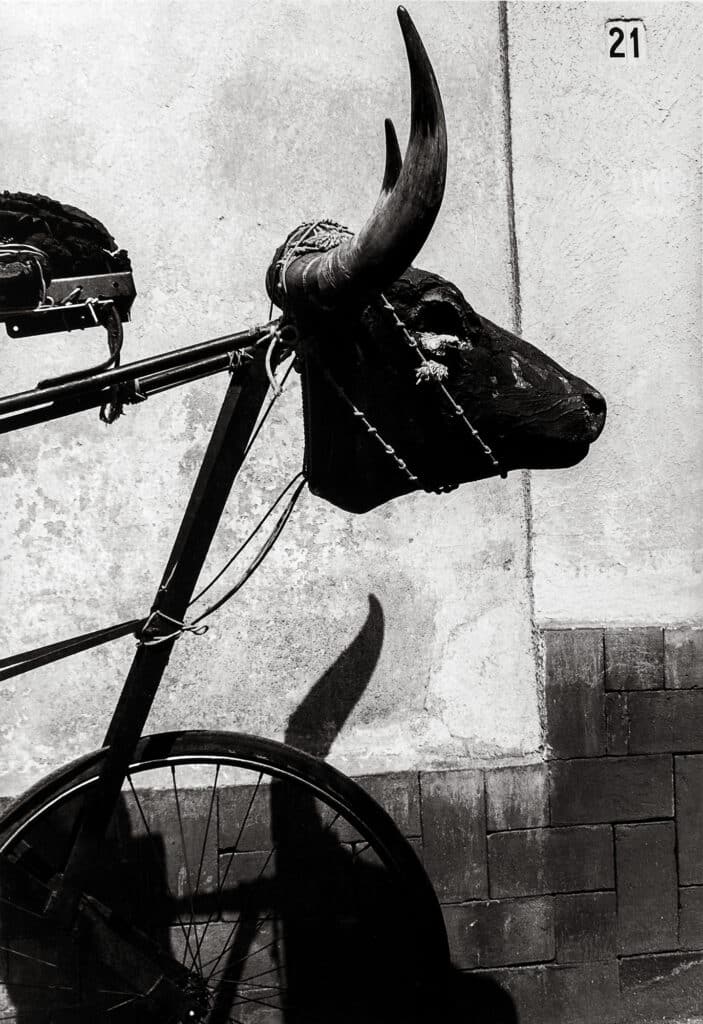
Was the dream in black & white or in color?
In black and white. And here is another dream before we say goodbye: My house is on fire, and all my negatives are inside, and I am horrified. But the woman with the iguanas (Nuestra Señora de las Iguanas), and all the characters from my pictures are walking out of the house… And they are all alive. And I am so happy to see them again, all so alive, that I don’t care about my negatives… A very strong dream, this is the reality of photography or, who knows, photography of reality!
Graciela Iturbide, Heliotropo 37. Fondation Cartier pour l’art contemporain. 261, boulevard Raspail, 75014 Paris. Exhibition until May 29, 2022. Curators: Alexis Fabry and Marie Perennès. Scenography: Mauricio Rocha.
Graciela Iturbide, Heliotropo 37. Catalog, featuring “The Lake,” a short story by Eduardo Halfon.
French version, €45, 304 pp. English edition forthcoming in April
A film by Lucía Gajá about Graciela Iturbide in Tecali is screened in the basement of the Fondation Cartier, with a soundtrack composed by Manuel Rocha Iturbide.
Graciela Iturbide’s long bibliography includes Phaidon’s pocket edition in the Collection 55, with text by Cuauhtémoc Medina.
